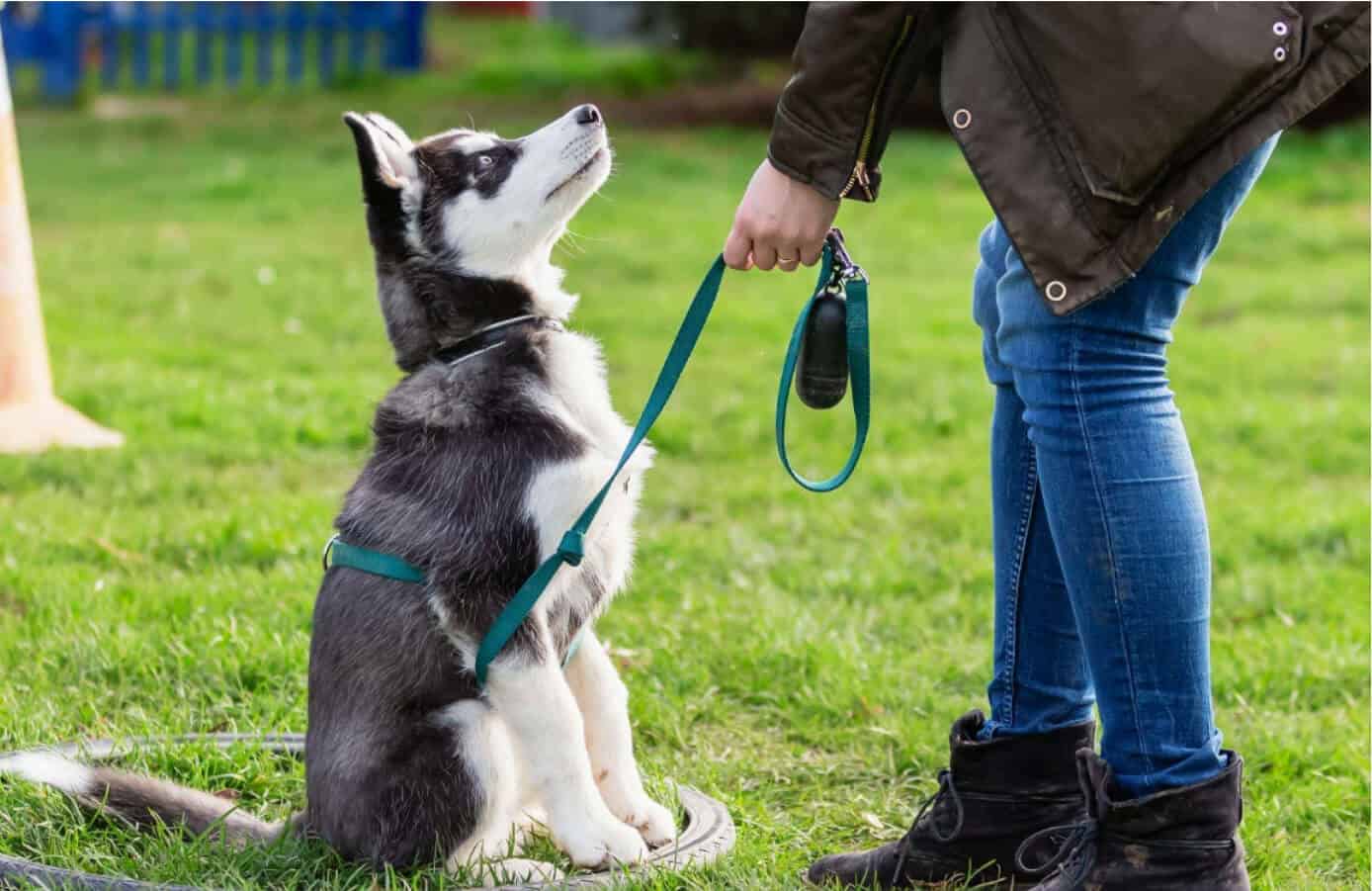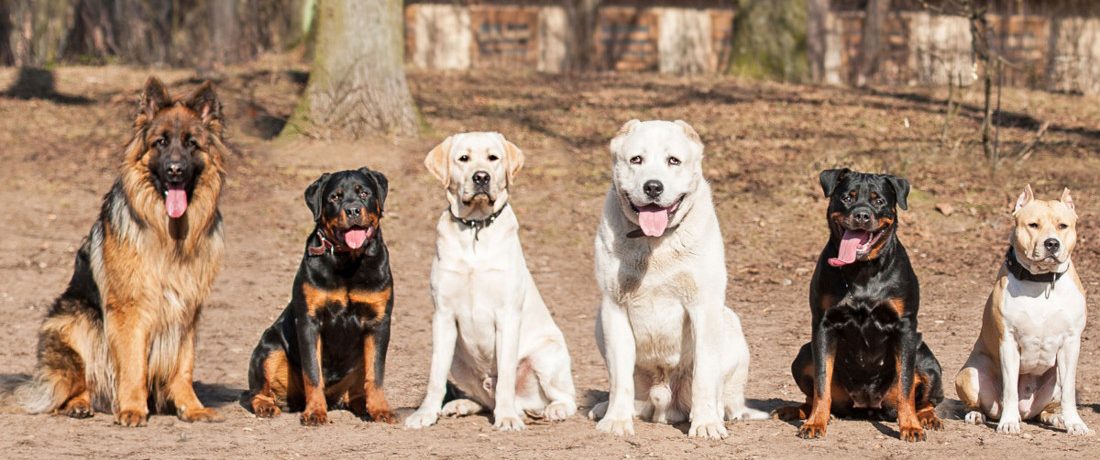Essential Tips for Successful Dog Training: An Overview for Animal Owners
Effective pet dog training is a multifaceted process that calls for a critical approach tailored to both the pet dog's temperament and the proprietor's goals. Understanding exactly how to navigate these barriers can substantially boost the training experience, ultimately changing the relationship between proprietor and pet.
Comprehending Canine Habits
Understanding pet actions is important for effective training and promoting an unified connection in between canines and their owners. dog training. Canines interact mainly via body language, articulations, and activities, making it vital for owners to translate these signals precisely.

Socialization plays a substantial function in pet dog habits; exposure to different atmospheres, individuals, and various other pets can dramatically affect a pet's character. Elements such as breed characteristics and specific character should direct training techniques, as some types might have details behavior characteristics that necessitate customized methods. By understanding these elements, owners can create a helpful atmosphere that motivates favorable habits, causing successful training outcomes and a deeper bond with their pet dogs.
Establishing Constant Commands
Effective interaction with your pet dog begins with establishing constant commands. This foundational aspect of training is vital for promoting understanding between you and your animal. Uniformity in the commands you use ensures that your dog can reliably connect details words or expressions with the preferred behaviors.
When selecting commands, choose clear, unique words that are simple to say and differentiate from each other. Prevent making use of similar-sounding commands that might perplex your dog. Utilizing "sit" and "remain" is appropriate, yet "sit" and "struck" might lead to misconceptions.
Additionally, preserve the very same tone and quantity for each command. Canines are delicate to singing cues, so differing your tone can develop confusion.
It is equally crucial to guarantee that all relative are on the same web page concerning the commands made use of. A united front in command usage will stop combined signals and strengthen the understanding procedure.
Positive Reinforcement Methods
The power of favorable support in pet dog training depends on its capability to urge preferred behaviors with rewards and appreciation. This method is grounded in the concept that behaviors complied with by beneficial outcomes are more probable to be repeated. By including positive support right into your training regimen, you can efficiently form your pet dog's habits in a useful manner.
To carry out favorable support, it's vital to recognize what encourages your dog, whether it be treats, playthings, or verbal appreciation. When your canine performs a preferred activity, such as resting on command, right away compensate them with a treat or affection. This organization in between the command and the favorable result strengthens their understanding.
It's essential to timing the incentives correctly; delivering the support within secs of the preferred actions helps your pet dog make the link (dog training). Additionally, uniformity is vital-- guarantee that all relative utilize the very same commands and benefit systems to prevent complication

Progressively, you can decrease the regularity of deals with as your pet finds out the actions, transitioning to applaud or recurring incentives. This technique not only cultivates a solid bond between you and your pet however also advertises a favorable knowing environment, making educating a delightful experience for both.
Socialization and Communication
Consistently exposing your pet to a variety of settings, people, and various other animals is crucial for their social development. Socializing ought to begin early, preferably throughout the vital home window of 3 to 14 weeks, when puppies are most receptive to new experiences. Nevertheless, older pets can likewise benefit from ongoing socialization initiatives.
Introduce your canine to various settings, such as parks, pet-friendly stores, and urban locations. This exposure assists them adjust to different stimuli, decreasing anxiousness and anxiety reactions. Encourage favorable interactions with other canines and people, making sure that these experiences are secure and regulated to promote confidence.
Utilize structured playdates index with well-mannered pet dogs, as this can improve your pet dog's social skills and educate them suitable actions. Obedience courses and training sessions also supply outstanding chances for socializing, permitting your pet to engage with others in a monitored setting.
Screen your pet's body language throughout communications, as this will aid you evaluate their comfort level. Gradually increase exposure to even more challenging scenarios while ensuring that each experience is favorable. A well-socialized dog is extra most likely to exhibit balanced habits, making them a delight to have in any type of setting.
Dealing With Usual Training Obstacles
Every canine proprietor will certainly encounter training obstacles at some factor, regardless of their pet dog's age or socialization degree. Recognizing common concerns such as stubbornness, disturbances, and fearfulness can assist in creating efficient techniques for enhancement.

Slowly introduce disturbances as the pet comes to be more competent in commands. Short, constant training sessions are likewise efficient in maintaining attention.
Terror can prevent a dog's discovering procedure. Steady desensitization to the source of concern, paired with favorable reinforcement, can help reduce anxiousness. Persistence is vital; never force a dog right into a scenario that creates distress, as this may intensify the problem.
Ultimately, understanding and resolving these common difficulties with an organized method will certainly promote a much more efficient training experience, reinforcing the bond between canine and proprietor while advertising reliable understanding.
Verdict
In recap, effective pet training depends on a detailed understanding of canine behavior, the facility of consistent commands, and the application of favorable support methods. Socializing plays an essential role in creating well-adjusted pets, while attending to typical training challenges needs persistence and adaptability. By carrying out blog here these vital approaches, pet dog owners can cultivate a strong bond with their pet dogs and promote desirable habits, ultimately causing an unified partnership between humans and their canine buddies.
Understanding pet behavior is essential for effective training and fostering a harmonious partnership between pooches and their proprietors.Socializing plays a significant function in pet behavior; exposure to different atmospheres, people, and other pets can considerably impact a pet's temperament.The power of favorable support in dog training exists in its capacity to motivate desired behaviors via incentives and appreciation. By including positive reinforcement into your training program, you can effectively form your dog's habits in a useful manner.
In summary, effective canine training depends on an extensive understanding of canine actions, the facility of regular commands, and click here for more info the application of positive reinforcement methods.